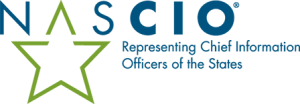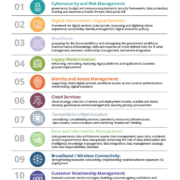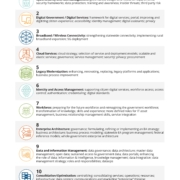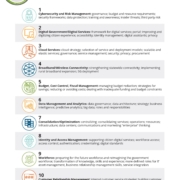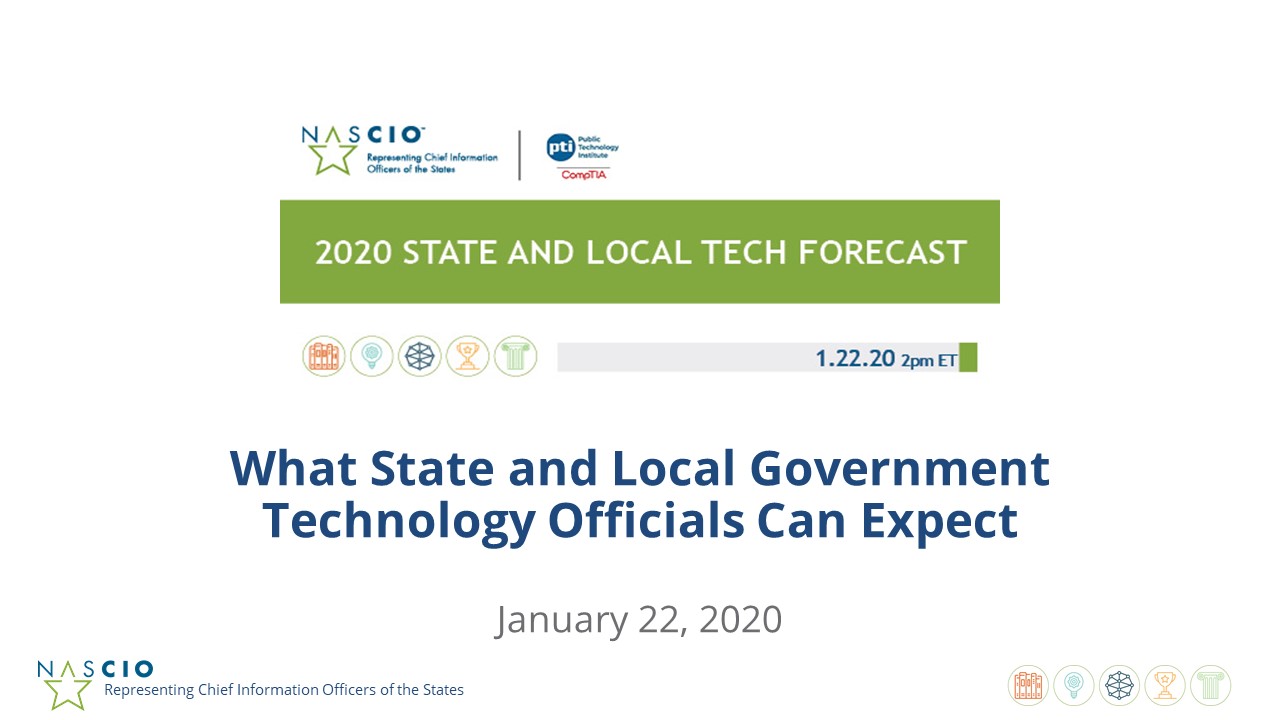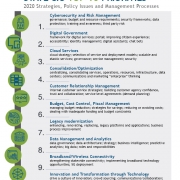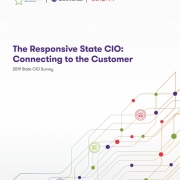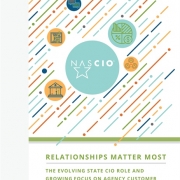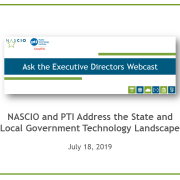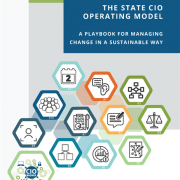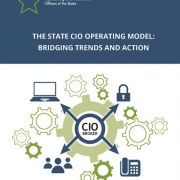This is the fourth in our NASCIO series “The CIO Operating System: Managing Change in a Sustainable Way.” It is also the culmination of the work from NASCIO’s project team and a partnership with Integris Applied, Inc., a corporate member of NASCIO, that began in January of 2018. This is a playbook of eleven plays that any state or territory can utilize in order to move into a new operating model. This operating model creates a highly disciplined state CIO organization that proactively engages with state agencies, understands current and emerging program and citizen needs, as well as maintains market awareness of current and emerging trends and offerings. Moving into and maturing this model is essential for each state and territory to effectively map capability demand with capability supply.
This report looks to the past in that it is the highlight and culmination of the first year of this special project, synthesizing all the previous work which includes three reports, a recorded webinar, a survey of state CIOs. It looks to the future in that the plays will be further developed with necessary guidance on how to effectively execute these eleven plays. The next big push in this project will be the development of the “DevOps” for the new multisourcing operating model. This playbook then becomes the launching point for the future. In many ways this report and the project that produced it is an inflexion point coincident with NASCIO’s 50th anniversary. Much has been accomplished within the NASCIO community in the past 50 years. And we celebrate all of that. Then we look to the future and consider “what is possible?” This playbook is the first step into that future. So fasten your seat belts, and get ready for the next major phase. Its going to be a wonderful ride!
Download
